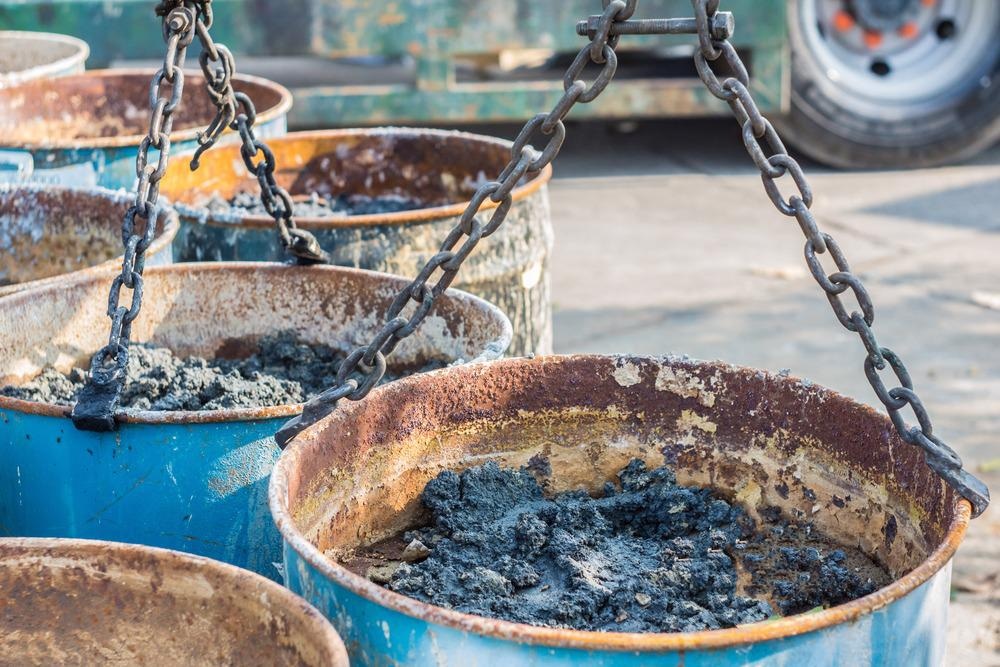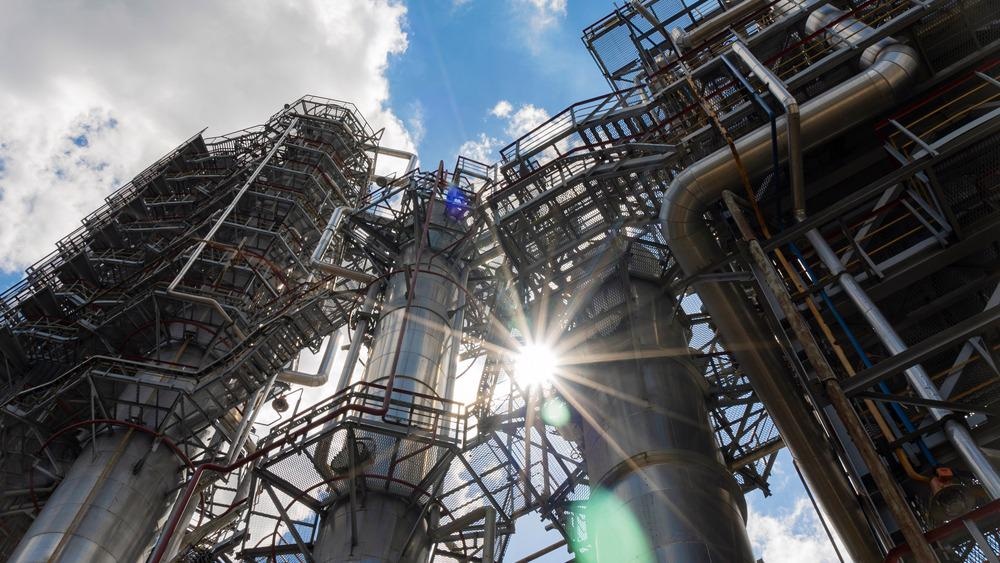Treatment of refinery oil sludge using smoldering combustion has the capacity to reduce the volume of waste and recover useful materials to be reused.

Image Credit: Lesterman/Shutterstock.com
What is Refinery Oil Sludge, Why is it Toxic, and How is it Disposed Of?
Vast amounts of refinery oil sludge are produced from the process of crude oil refining. Refinery oil sludge contains toxic substances, including benzenes and phenols, as well as oil and other odorous and toxic substances. Legally, oil sludge is classified as hazardous waste and, therefore, must be disposed of effectively.
Oil sludge contains compounds known to have carcinogenic effects, which is why waste management systems that process oil sludge are vital to protecting public health as well as environmental health.
The industry has been met with significant challenges in recent years due to the high risk of oil sludge leaching into the environment. If oil sludge waste is not properly treated, it has the potential to cause an environmental health disaster or a public health disaster.
Common methods of oil sludge treatment include centrifugation treatment, the electromagnetic method, frost and melt treatment, froth flotation, microwave radiation, solvent extraction, surfactant enhanced oil recovery (EOR), and ultrasonic radiation.
These techniques, however, have their limitations. They are often costly and contribute to other sources of pollution, such as noise pollution. Additionally, they do not take advantage of the useful components of sludge.
Now, scientists have investigated the use of smoldering combustion in the waste treatment of oil sludge. The results are promising, indicating that smoldering combustion is an efficient alternative method of converting oil sludge into a harmless compound while recovering useful components of the sludge, such as oil and water.
What is Smoldering Combustion and How is it Used in the Treatment of Refinery Oil Sludge?
Smoldering combustion is different to flaming combustion. It is a slow, flameless burning that occurs at low temperatures where heat is released at the point when oxygen directly attacks the surface of a solid fuel. Generally, the peak temperatures for smoldering combustion range from 450 to 700°C. Particularly dense and energetic fuels can push this peak up to roughly 1000°C.
Find out more about managing industry waste: Investigating Fuels Produced from Waste Tires
Smoldering combustion is the most consistent type of combustion phenomenon; it is responsible for the mega-fires found in the Earth’s natural deposits of peat and coal, where the largest and longest fires on Earth take place. The Burning Mountain in New South Wales, Australia, that has been burning for over 6,000 years and is considered to be the Earth’s longest continuously burning fire, is the result of smoldering combustion.
In recent years, scientists have explored the use of smoldering combustion in waste treatment, but not in the treatment of refinery oil sludge. New research from scientists at Shandong University, China, has revealed the potential use of smoldering combustion to treat oil sludge, with results that are more beneficial than the techniques currently used, mainly because it retrieves useful components from the sludge that are usually lost.
The team in China conducted bench-scale experiments that confirmed the feasibility of using smoldering combustion to treat refinery oil sludge.
Their data revealed that following treatment with smoldering combustion, the sludge was converted into a solid residue that was brick-red, odorless, and granular, at a mass that was significantly small than the original sludge. The residue was also free of the typical hazardous substances found in sludge, such as petroleum hydrocarbons.
The results indicated that smoldering combustion performed well as a method of treating oil sludge.

Image Credit: kalyanby/Shutterstock.com
Additionally, via this method, the team were able to obtain water and oil, useful resources from the sludge that are usually lost. Further to this, data showed that the recovered oil had a calorific value higher than that of kerosene, demonstrating the potential of reutilization.
Recovery of Reusable Oil and Water
The recovery of oil and water from the refinery sludge marks a significant difference in the smoldering combustion treatment method compared with conventional ones. Other widely used methods do not obtain useful resources from the sludge—they are wasted. With smoldering combustion, some value can be recovered from the sludge.
What Factors Influence the Performance of the Smoldering Combustion?
The research showed that moisture content, filler to oil sludge ratio, and airflow rate impacted the smoldering performance of oil sludge. The team observed that by increasing the air flux, they were able to control the rate of burning as well as the extent of the sludge treatment.
It was also found that certain conditions encouraged smoldering to develop more than others, such as high heterogeneity of soil permeability or high heterogeneity of sludge saturations.
Limitations to Overcome
While the method of smoldering combustion shows much promise for the treatment of refinery oil sludge, there are some aspects that still need to be developed.
For example, small amounts of SO2 and NOx and large amounts of H2, CO, and H2S, were found to remain in the non-condensable off-gas produced by the method, which require further purification.
What are the Implications for Industry-Wide Oil Sludge Treatment?
Smoldering combustion is a self-sustaining method of refinery oil sludge treatment which results in reduced waste volume. Additionally, the method recovers oil and water from the sludge that would have otherwise been lost.
In the future, it is likely that methods like this will begin to replace older waste treatment techniques to take advantage of their benefits. The face of the oil industry may adapt to facilitate this switch in waste management methods.
References and Further Reading:
Hou, B., Xie, S., Chen, M., Jin, Y., Hao, D. and Wang, R., (2013). The Treatment of Refinery Heavy Oil Sludge. Petroleum Science and Technology, 31(5), pp.458-464. https://www.tandfonline.com/doi/abs/10.1080/10916466.2012.708083
Johnson, O. and Affam, A., (2018). Petroleum sludge treatment and disposal: A review. Environmental Engineering Research, 24(2), pp.191-201. https://www.eeer.org/journal/view.php?number=964
Solinger, R., Grant, G., Scholes, G., Murray, C. and Gerhard, J., (2020). STARx Hottpad for smoldering treatment of waste oil sludge: Proof of concept and sensitivity to key design parameters. Waste Management & Research, 38(5), pp.554-566. https://journals.sagepub.com/doi/abs/10.1177/0734242X20904430
Zhao, C., Li, Y., Gan, Z. and Nie, M., (2021). Method of smoldering combustion for refinery oil sludge treatment. Journal of Hazardous Materials, 409, p.124995. https://www.sciencedirect.com/science/article/abs/pii/S0304389420329861?dgcid=rss_sd_all#!
Disclaimer: The views expressed here are those of the author expressed in their private capacity and do not necessarily represent the views of AZoM.com Limited T/A AZoNetwork the owner and operator of this website. This disclaimer forms part of the Terms and conditions of use of this website.